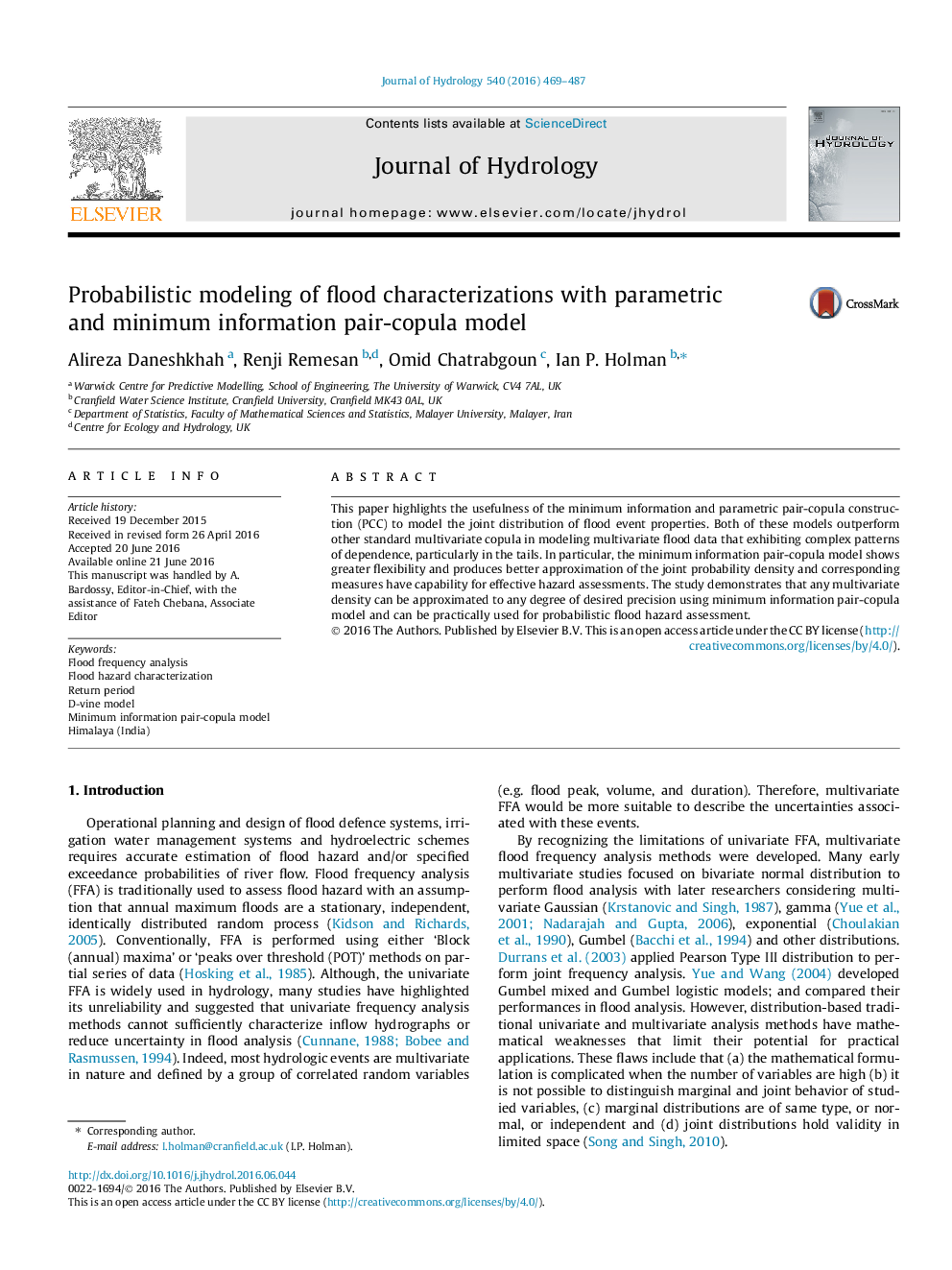| Article ID | Journal | Published Year | Pages | File Type |
|---|---|---|---|---|
| 6409548 | Journal of Hydrology | 2016 | 19 Pages |
â¢Addressing importance of dependence structure modeling in flood risk assessment.â¢Adopting vine copula model as a more effective way to construct multivariate data.â¢Improving risk modeling of flood data using minimum information vine model.â¢Approximating a joint density by any vine structure to any degree of precision.â¢Considering non-constant conditional dependencies to improve flood risk modeling.
This paper highlights the usefulness of the minimum information and parametric pair-copula construction (PCC) to model the joint distribution of flood event properties. Both of these models outperform other standard multivariate copula in modeling multivariate flood data that exhibiting complex patterns of dependence, particularly in the tails. In particular, the minimum information pair-copula model shows greater flexibility and produces better approximation of the joint probability density and corresponding measures have capability for effective hazard assessments. The study demonstrates that any multivariate density can be approximated to any degree of desired precision using minimum information pair-copula model and can be practically used for probabilistic flood hazard assessment.
